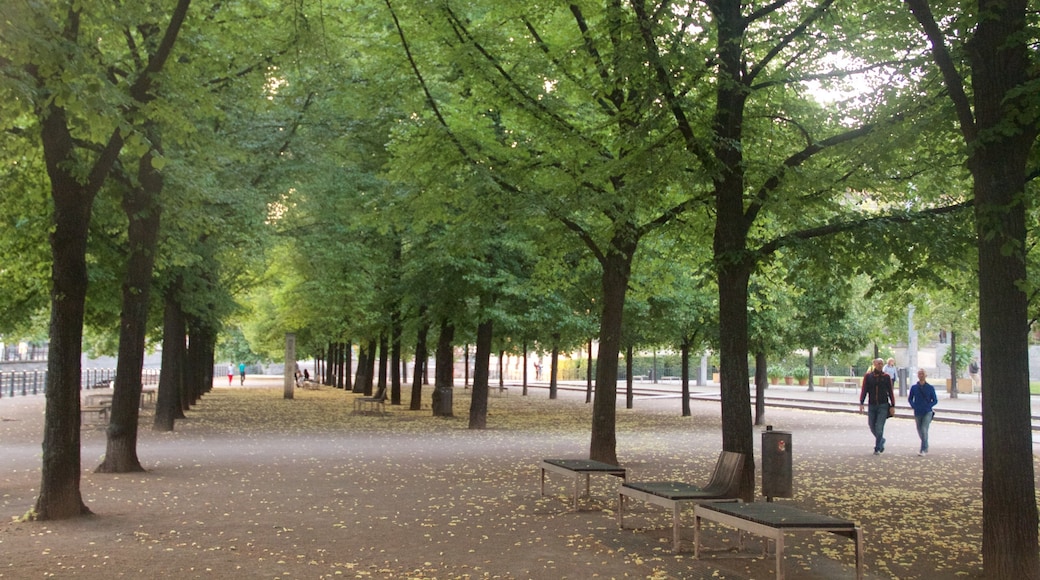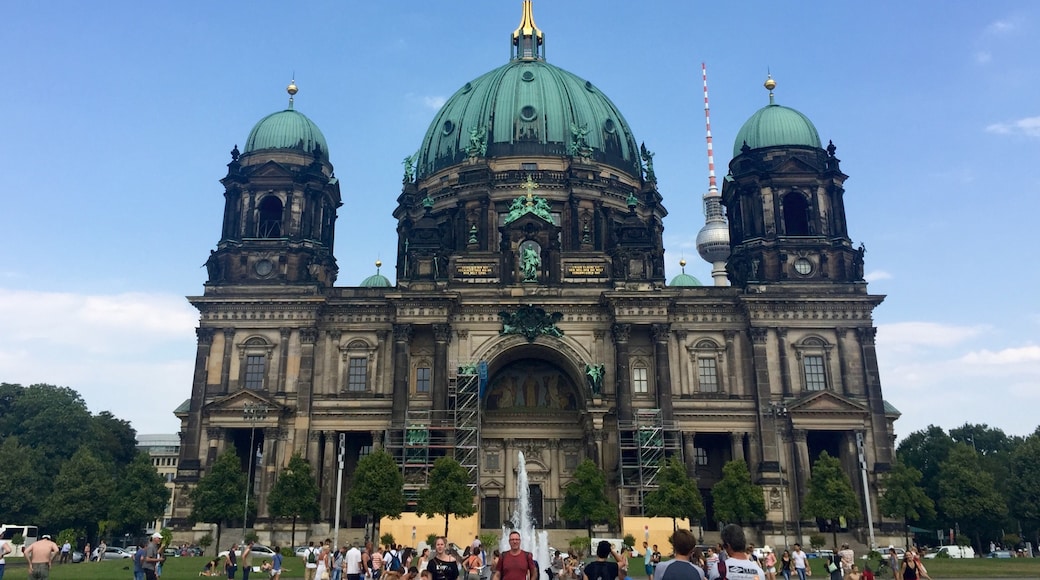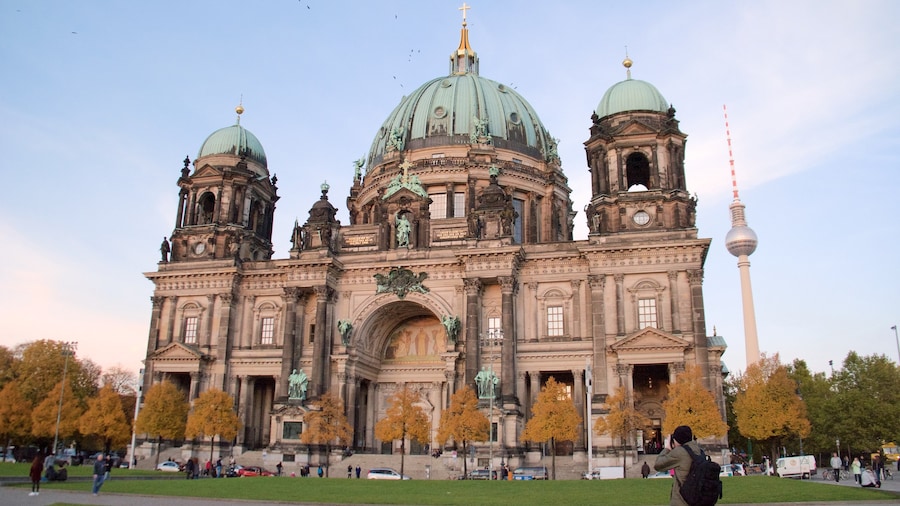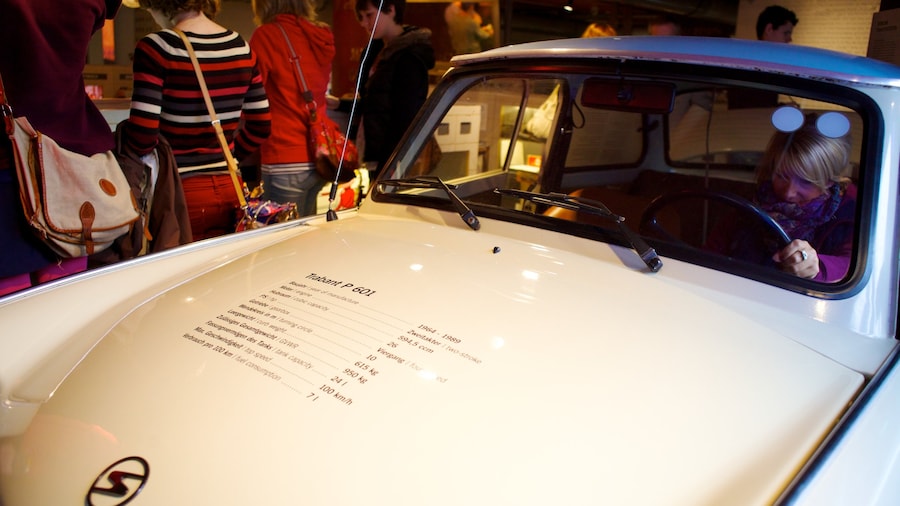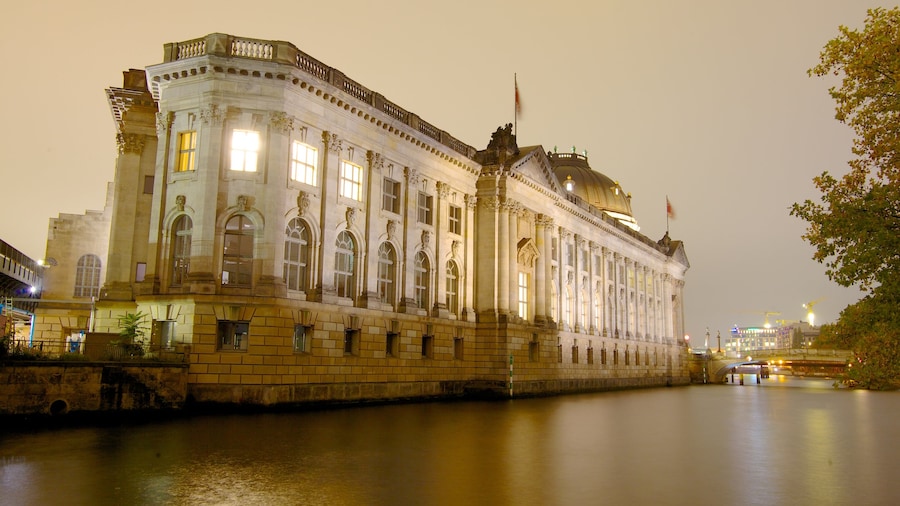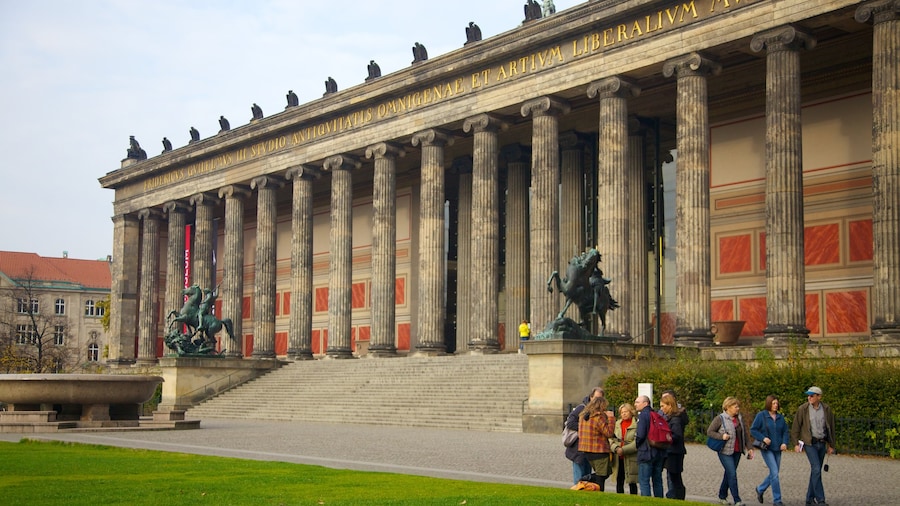Once a royal garden, this elegant public park is now a perfect resting and picnic spot for city explorers.
Sunbathe on the Lustgarten’s lawns and gaze up at the great classical buildings of Museum Island. This public park is a favorite hangout for visitors exploring the city and surrounding museums. Go later in the evening as the crowds begin to disperse and admire how the spotlights light up the grand columns of the surrounding structures.
The plot of land that the Lustgarten sits on was originally drained from a swamp and used to grow herbs and vegetables, before being transformed into a royal “pleasure garden” in the 17th century. It went through several redesigns after this and was even paved over by the Nazis so they could use it as a space for parades and marches. Come here today and find the garden restored to its 19th-century splendor following yet another rebuild in the 1990s.
Stroll around the manicured lawns and neat hedges. Look for the park’s huge granite bowl, found in front of the steps of the Altes Museum. This enormous monument was a big novelty attraction at the time of its construction in the early 19th century, when it had to be brought to its location by river boat. One of its nicknames is the “Berlin soup bowl.”
Sit on the Lustgarten and marvel at the majesty of Berlin’s Museum Island. The park is surrounded by renowned Berlin landmarks, including the Altes Museum, the Berliner Dom and the River Spree. With so many famous attractions nearby, the Lustgarten makes an ideal starting point for exploring all the history and culture on display. Across the Spree Canal is the Baroque Zeughaus building, home to the German Historical Museum.
Buy food from vans or stalls in the area or walk to Mitte where there are even more shops and restaurants. Lustgarten is about a 15 minutes’ walk from Alexanderplatz and Hackescher Markt, and can be easily reached by public bus. Parking options are extremely limited around Museum Island so use public transportation or, if the weather is good, a bike instead.
